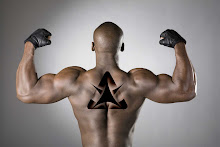52 Combat
The Boxing aspects of Mental Chess
Constellation
"Catch it, Slip it, dip on him, rock and weave with him, roll with the blow, counter and shoot your own shot" Bong! There it is.
This Boxing Flow is but a 3rd of the attributes needed to become a solid 52 Practitioner. In fact, keeping all things on the square, and considering my opening this would only be 1\ 4th of the skill one needs to master 52. You will also need footwork, and offensive combinations to bring you to the final stage, and that's where the real game is won or lost. I call this element Mental Chess, the art of breaking the turtle out of his shell, or making the rabbit fall into his own hole. This is done by applying a strategy using the visual and physical dimension of the square to reduce your opponent's ability to use his best skill set to thwart your efforts of shutting him down. Like the chessboard you have 64 squares to set up your position, 8 columns and 8 rows, and within this structure you have angles of attack and the inner circle as a reference point. From the circle's center you can control the perimeter (the outer square) due to shorter movement from inside the square.
The position that you take on the square fits into the zones or quadrant keeping you moving from 90 to 45 degrees. These are your Defensive and Offensive angles and the basis of 52 combat, the utility of our style of Boxing.
Mental Chess: Vital Body Assault
"Cracking the shell", A Boxer is constantly on the hunt seeking out soft tissue to attack as he relentlessly pressures the pipes trying to collapse the body's infrastructure. You should learn how to counter from your shield, or use a moving shield although it looks defensive, it in fact is an attacking method that uses the body's position on the square to create a defensive angle to cut off the path of the in coming blow (think James Tony rolling in the pocket). To crack the shell,
probe the body for openings, simply chip away at your opponents guard exposing vulnerabilities, by creating insecurity in his mind that he can no longer defend.
In short, we are breaking him down by overwhelming the neuro circuitry of the Brain by constantly sending shock waves of pulsating pain, crashing his nervous system forcing the Brain to shut down the body (this is where some fighter kill over in the fetal position or flee the scene). This happens due to the stress of a fighter who cannot relax, his breath shorten cause him to panic, while tensing up, bracing for the next blow. Soon his reaction time will decrease and the opening will be big enough to drive a truck through. An easy counter to learn but must be practice is a deep and rhythmic breathing pattern in sync with your defensive pace. Keeping a rhythm allows you to flow, (roll with the blow) maintaining a clam state of mind, because just blocking or being defensive is not enough to prevent the hyper ventilating state when the body and the mind feels trapped. Elevate your mind through meditation and affirmations that empower you to see victory even in death.
Mental Chess: How deep is the rabbit hole
"Catching the elusive one", The Rabbit is an evasive, quick and agile style. Any Boxer with this ability create a great challenge to corner, or pin the Rabbit down long enough to inflict pain. The Golden rule has always been to attack the body to render the legs useless, and as a consequence making the rabbit fall into a hole in the process. How do we achieve this goal when facing a Boxer skilled in movement and slick with his feet, able to maintain his range while slipping, pivoting, and shuffling his feet to stay out of danger? A Boxer with the ability to circle and fire a rapid jab is no easy task; indeed one would have to be very knowledgeable of his surrounding and environment to break the rabbit's rhythm. To know the square is to project an imaginary line around your opponent and then physically box him in, cutting off the path of escape, and controlling the range of engagement (Leonard vs Benetiz). You have to know before you move how to counter the Rabbit's movement to stay in front of him. The key is to know when to angle off the line, circle off an angle, and straight line in on a circle.
Yes 52 is Mental Chess a game played for high stakes, and just your run of the mill boxer type, no, no a 52 practitioner has to study the laws of natural movements as well as the physical and visual aspects of the squared circle. For every encounter is a challenge that the prepared mind must overcome to be successful.
Peace



No comments:
Post a Comment